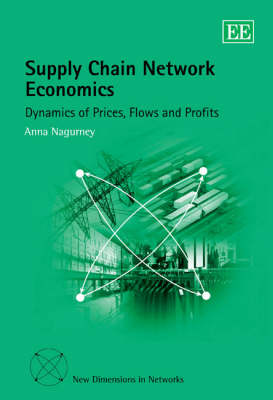New Dimensions in Networks
2 total works
In this book, the authors provide a unifying framework for the study of decision-making by a variety of economic agents including consumers and producers as well as distinct intermediaries in the context of today's networked economy. They provide the conceptual, analytical, and computational tools for the study of supernetworks. Their approach is rigorous and of sufficient generality and detail to give added insight into the behavior and structure of large-scale, interacting and competitive network systems, such as transportation, telecommunication, and financial networks.
Areas studied include: supply chain networks with electronic commerce, financial networks with intermediation, telecommunicating versus commuting decision-making, teleshopping versus shopping decision-making, as well as transportation and location decisions. Case studies drawn from practice are provided for illustration purposes.
Academics and practitioners in economics, business, and operations research along with management scientists, transportation and logistics researchers, computer scientists and applied mathematicians will find this book fascinating and useful.
After an introduction of the theoretical foundations, the book extends and applies the theory to energy supply chains in the form of electric power generation and distribution networks. The relationships between electric power supply chains and transportation networks are vividly captured through theoretical results and the solution of practical examples. The book then explores environmental supply chain and financial networks with intermediation, which are interpreted as supply chains and also solved as such. Throughout, the underlying theme is that of transportation networks and how the relationships between supply chain networks and the more established theory of transportation network equilibria can be applied and exploited for logistic-type applications.
Economists and transportation researchers will find the book's theory and applications of great interest. Operations researchers and management scientists as well as practitioners in business logistics will be interested in the book's methodological and practical tools.

